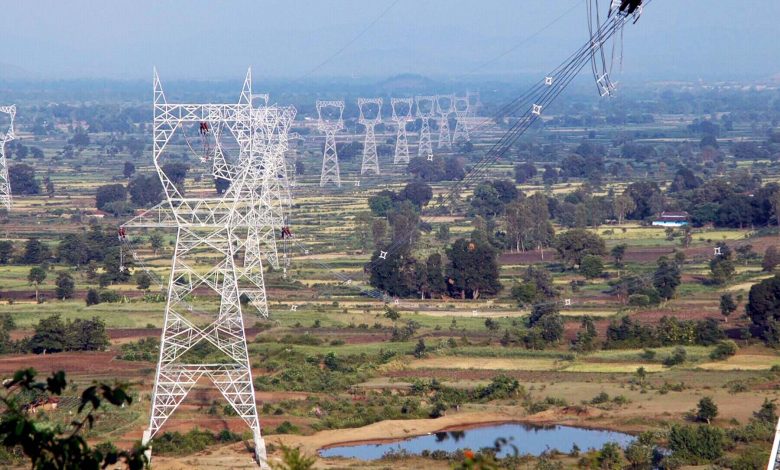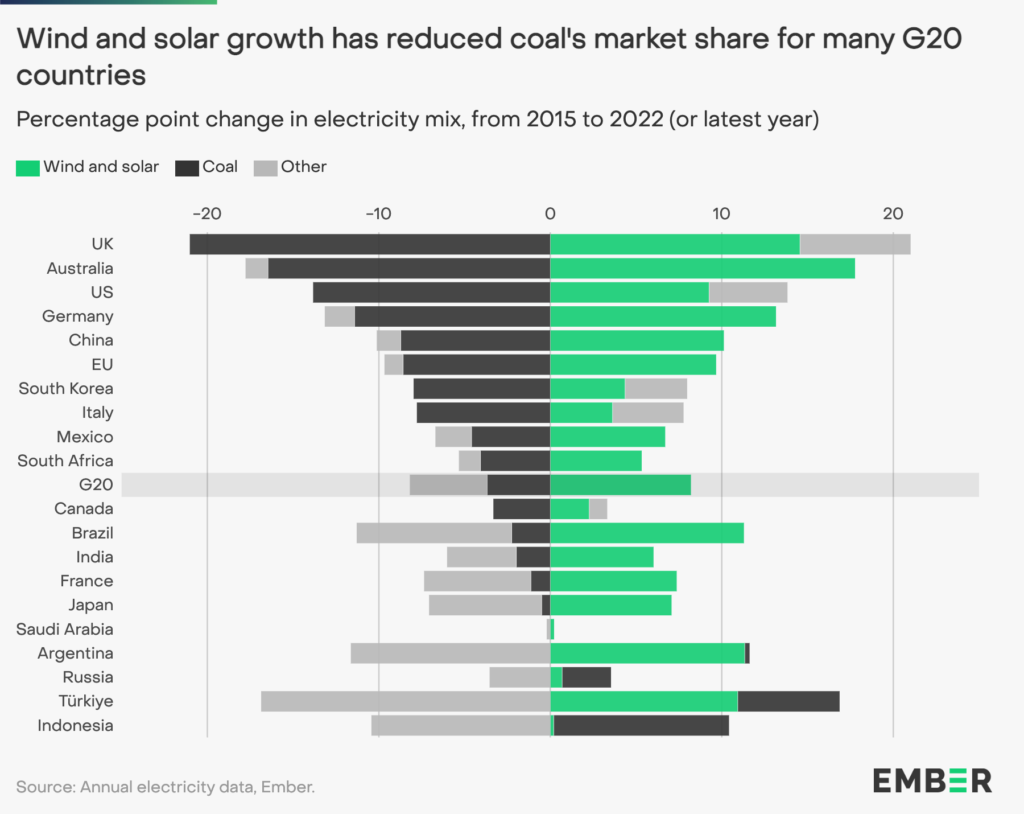Brazil Tops G20 Country Ranking In Power Sector Decarbonisation
India is stepping up as a solar king, with generation growing by 45 times in the last decade to reach 5% of its power in 2022

Brazil, which will host the G20 next year has the highest share of clean electricity in the G20. In 2022, Brazil generated 89% of its electricity from clean sources, which includes 63% hydro, 12% wind power and 3% solar power. Fossil fuels accounted for 11% of Brazil’s generation in 2022, the majority of which was gas (7%).
India, the current host, is much further behind in decarbonising its electricity system. It has the second highest coal reliance, after South Africa, but is already getting 9% of its electricity from solar and wind.
“Brazil is way ahead of India in securing a clean electricity system,” said Dave Jones, Ember’s Head of Data Insights. “G20 hosts can both learn from each others’ successes. India is stepping up as a solar king, with generation growing by 45 times in the last decade to reach 5% of its power in 2022. Brazil had a headstart with a strong base in hydroelectric power, but they haven’t rested on their laurels, with a truly impressive growth in wind power, which has grown by 16 times in the last decade and reached 12% of its power in 2022.”
Wind and solar replacing coal power’s share in G20 countries. Pathways aligned with 1.5C require rapid reductions in coal power this decade Wind and solar have reduced the share of coal power in G20 countries since the Paris Agreement, according to an analysis of data from the fourth annual Global Electricity Review published by energy think tank Ember. However, the transformation is not yet happening fast enough for a pathway aligned with 1.5C, although there are positive signs.
The data reveals that in G20 countries, wind and solar reached a combined share of 13% of electricity in 2022, up from 5% in 2015. In this period, the share of wind power doubled and the share of solar power quadrupled. As a result, coal power fell from 43% of G20 electricity in 2015 to 39% in 2022. Shares of other sources of electricity remained broadly stable, with fluctuations of just 1-2 percentage points.

According to the IPCC, wind and solar can deliver over a third of the emissions cuts required in 2030 to limit global heating to 1.5 degrees. Encouragingly, half of these emissions reductions from wind and solar would actually save money compared to the reference scenario.
“Replacing coal power with wind and solar is the closest thing we have to a silver bullet for the climate,” said Malgorzata Wiatros-Motyka, senior analyst at Ember. “Not only do solar and wind cut emissions fast, they also bring down electricity costs and reduce health-harming pollution.”
Across the G20, progress towards wind and solar power is mixed. The leaders are Germany (32%), the UK (29%) and Australia (25%). Turkey, Brazil, the US and China have consistently held above the global average. At the bottom are Russia, Indonesia and Saudi Arabia with nearly zero wind and solar power in their mix.
Thirteen of the G20 still have over half of their electricity from fossil fuels as of 2022. Saudi Arabia stands out with almost 100% of its electricity from oil and gas. South Africa (86%), Indonesia (82%) and India (77%) are the next most reliant on fossil – all predominantly coal – generation. \
OECD countries in G20 accelerate to 2030 coal phase-out
Among advanced (OECD) economies in the G20, which should target coal phase-out by 2030, there has been a reduction in coal generation by 42% in absolute terms from 2,624 TWh in 2015 to 1,855 TWh in 2022.
The fastest decline in coal power in the G20 has been achieved by the United Kingdom, which reduced its coal generation by 93% since the Paris Agreement was signed, falling from 23% of electricity in 2015 to just 2% in 2022. Italy halved its coal power in the same period, while the United States and Germany reduced their coal power by around a third. Even coal-dependent Australia has reduced its share of coal power from 64% in 2015 to 47% in 2022. Among advanced economies in the G20, Japan stands out as it has yet to reduce its share of coal power, which remains around a third of its electricity.
The growth in wind and solar generation has been a key factor in the success of these OECD countries in reducing coal power. The UK and Germany stand out with the highest shares of wind power at 25% and 22% in 2022, while Australia and Japan top the G20 for
solar power share at 13% and 10% in 2022.
Despite encouraging progress in mature economies, the decline in coal power needs to accelerate even faster this decade. According to the IPCC, global unabated coal power needs to fall by 87% this decade, from 10,059 terawatt hours (TWh) in 2021 to 1,153 TWh in 2030. The majority of this fall needs to happen in G20 countries, which were responsible for 93% of the world’s total coal generation
in 2022.
Although the G20’s share of coal power has reduced since the Paris Agreement, the absolute generation of coal power has increased as countries turn to coal to meet rising demand. In 2015, G20 countries generated 8,565 TWh of coal-fired electricity, increasing by 11% to 9,475 TWh in 2022. This increase is being driven by five key countries.
The writer of this article is Dr. Seema Javed, an environmentalist & a communications professional in the field of climate and energy




